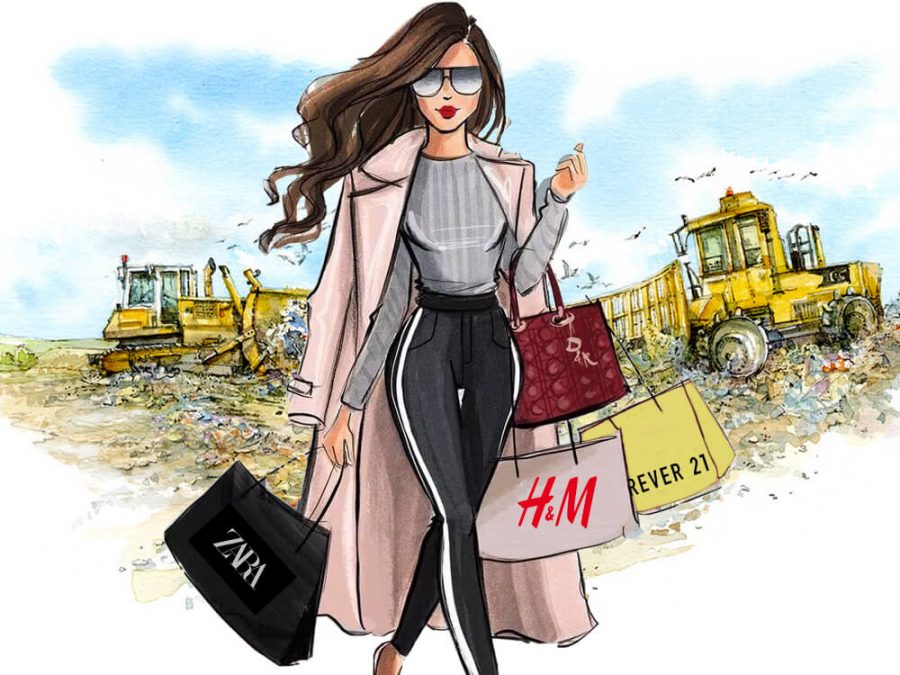The Truth Behind Our Clothing
February 7, 2021
There was once a time when making a single piece of clothing took days of strenuous labor. However, today, thousands of articles of clothing can be made by one facility during that same period. The fashion industry has certainly changed over the decades. The invention of the sewing machine in 1846 put the world on the fast track towards mass production, but at what cost? Is fast fashion really worth the level of waste and workplace torture that trails behind a designer blouse?
Fast fashion is the term used to describe the mass production of the latest clothing designs from celebrity culture or Fashion Week events. These items are produced very quickly to meet consumer demand and keep up with current trends. It allows mainstream consumers to purchase stylish clothing at an affordable price. Fast fashion is challenging new clothing lines that are introduced on a seasonal basis. In fact, it’s not uncommon for these retailers to introduce new products multiple times in one week to stay up to date.
The method of rapidly producing high volumes of clothing originated in Europe in the 1800s. Employers hired people known as “sweaters” to make clothes from their homes for very low wages. Large companies took advantage of people’s need for work. This situation came to mirror the modern chain of labor where companies outsource their production lines to other countries. The working conditions are by no means safe, as evidenced by the 2012 fire at the Tazreen fashion factory in Bangladesh that took 117 lives. Similar to Bangladesh, a fire had broken out in 1911 at the Triangle Shirtwaist Factory in New York.
However, these incidents did not hold producers back because the prospect for profit was just too great. The two world wars in the early part of the 20th century necessitated standardization of clothing manufacturing. Even after the wars, the general public became accustomed to buying mass-produced clothes, which became one of the key reasons for the boom of fast fashion. By the 60s, the idea of the “latest trends” came to light and production began to happen at a much more rapid pace so companies could meet the demands of consumers.
The demand for the latest pieces of couture quickly made production grow, but so did the damage to people’s lives. Workers in factories became susceptible to long hours, low wages, and workplace accidents. People had few options and nowhere else to turn for a job, so they braved the harsh conditions. Even if this was not the companies’ intentions, it is still the reality of fast fashion today. The origins of the first fast fashion retailer can’t be simply traced, but some of the leaders include Zara and H&M. Their companies started out in Europe and then quickly expanded around the world to countries including Pakistan, China, Bangladesh, and India, but continued selling primarily in the U.S. and Europe. These design, manufacturing, and marketing systems utilize low-quality materials and trend replication to bring inexpensive styles to the public regardless of the environment for employees.
Many have realized over time that the workers of outsourced clothing production deserve better working conditions and wages. In efforts of improving the lives of these people, consider the socioeconomic impact before buying products of major companies such as Fashion Nova, Shein, Rowme, and Forever 21. These are only a few of the many companies responsible for the injustice abroad. Millennials, known to be the drivers of our economy, are opting for more eco-friendly approaches, which is forcing clothing manufacturers to be more ethical and inclusive. Through combined efforts, actions can reverse the decades of damaged lives of workers around the world.
